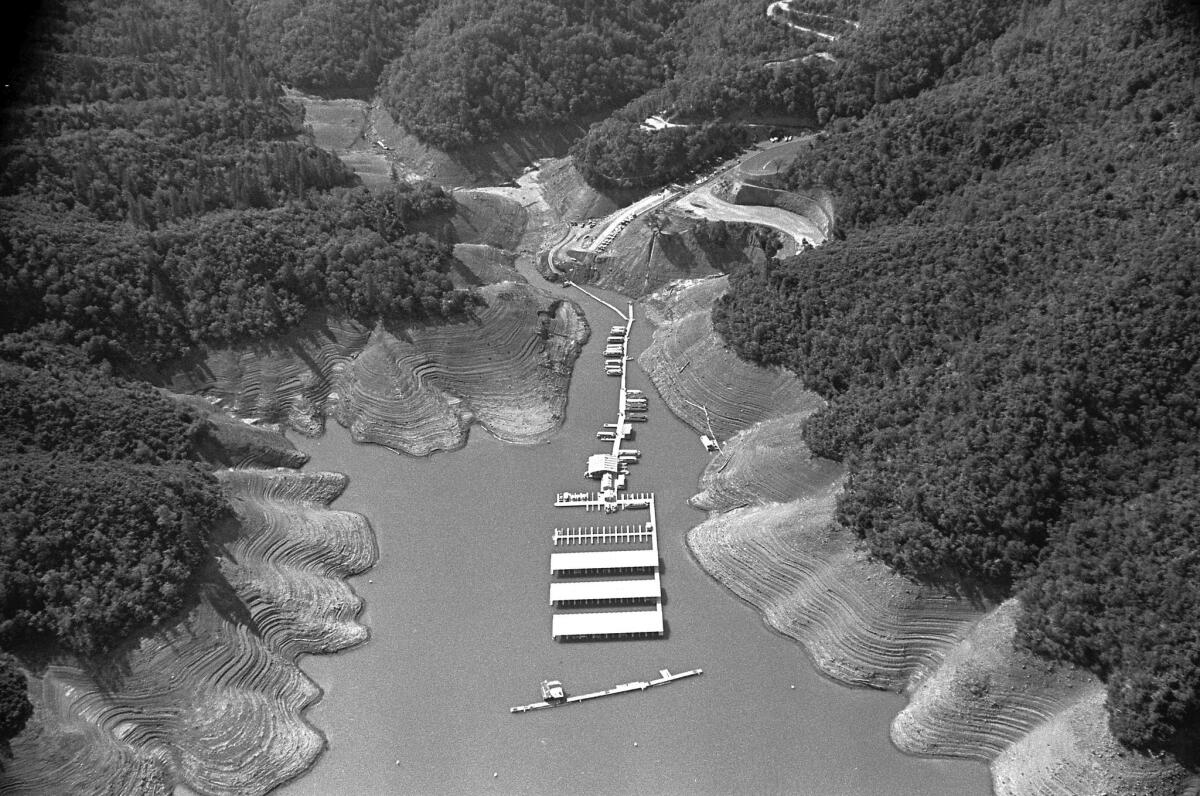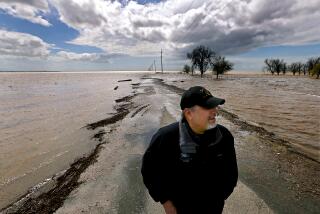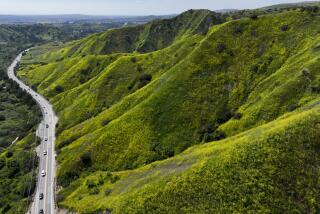California Retrospective: 3 crippling droughts that changed California

- Share via
The worsening drought in California is one in a series of water crises that have challenged the state in the last century. Here is a breakdown of those earlier droughts from The Times’ archives:
1928-1935
Known as the “Dust Bowl” drought, it is remembered for its length and severity.
Farmers watched helplessly as water levels dropped. By 1934, The Times reported that fruit was falling off trees prematurely, especially crops that relied on rain rather than irrigation. Cattlemen desperately sought pastures suitable for their livestock.
The Humane Society said it was often called to help rescue horses and other creatures on ranches that didn’t have enough water.
“In some cases, this is impossible,” a San Diego Humane Society official told The Times. “They are too far gone.”
The drought helped spur ambitious waterworks and reservoir projects aimed at giving California a more reliable water supply.
1976-77
This drought hit farmers and ranchers hard. A federal report produced in 1978 placed the economic losses at more than $1 billion.
Farmer switched to crops that used less water and aggressively pumped for groundwater, the report said.
Some feared the drought could cripple the state’s water system. “The drought, in effect, has become a severe test for this state’s vast water supply system, and some water officials now believe the system is not withstanding the test as well as they had expected,” The Times wrote in 1976.
Perhaps the drought’s greatest legacy was that it marked the beginning of a serious water conservation effort that continued even after the crisis ended.
Southern California cut its water use by 15%. A concerted statewide campaign — including severe rationing in the hard-hit Bay Area — helped convince residents the crisis was real. So did a Metropolitan Water District surcharge on customers who did not cut their use by 10%, according to Times reports. Los Angeles and some other cities helped by imposing mandatory conservation.
There were fears that 1978 would be another drought year. But a series of powerful storms turned the tide.
1987-1993
Dry conditions led officials to impose mandatory conservation measures for the first time since the drought of 1976-77.
Some studies at the time put agricultural losses as high as $250 million a year, and foresters estimated that insect infestation caused by the lack of water in the Sierra Nevada killed enough trees to build 1.8 million houses. Fishery experts blamed blaming trickling flows for the near-devastation of the state’s salmon population and the degradation of the Sacramento-San Joaquin Delta.
Overall, experts said the economic impact was significantly less than feared.
Gov. Pete Wilson finally declared the drought over in 1993, when reservoir levels reached 80%. But cities had been loosening water restrictions well before then.
There was concern at the time that Wilson’s declaration would prompt residents to ease up on their conservation.
One official closed the book on the drought with this warning: “We need to remember here that we can’t take water for granted, or have the belief that an over-abundant cornucopia of water will always be there. It’s nature, and nature’s cycles can also be devastatingly short.”
More to Read
Sign up for Essential California
The most important California stories and recommendations in your inbox every morning.
You may occasionally receive promotional content from the Los Angeles Times.











